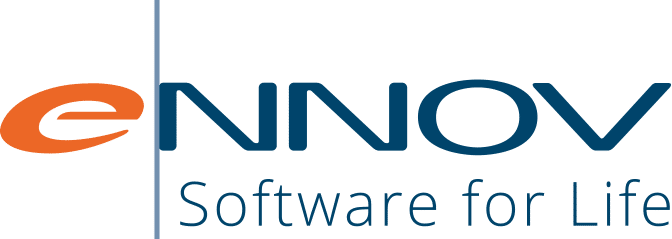The era of stitching together disconnected e-clinical tools is ending, and the transformation is accelerating faster than expected.
Clinical trials face unprecedented complexity. Decentralized models are expanding, compliance pressures mounting, and stakeholders demand faster insights across all development phases. Many life sciences organizations now recognize a troubling reality: their fragmented, best-of-breed e-clinical stacks have become operational liabilities, not competitive advantages.
The Market Guide for Life Science E-Clinical Systems from Gartner identifies a critical industry inflection point. Organizations are shifting from disconnected point solutions toward unified, business-centric e-clinical platforms. This transition addresses fundamental operational challenges that slow trials, increase risk, and limit scalability.
The True Cost of Fragmented Systems
Most organizations built their e-clinical environments incrementally: a Clinical Trial Management System (CTMS) from one vendor, Randomization and Trial Supply Management (RTSM) from another, perhaps a standalone Electronic Trial Master File (eTMF). Initially, this best-of-breed approach appeared logical, allowing teams to select specialized tools for specific functions.
The reality proves far more costly. These disconnected point solutions create significant operational friction:
Data Management Challenges
- Duplicate data entry across multiple systems
- Manual reconciliation between platforms
- Version control conflicts and validation overhead
Integration Complexity
- Fragile custom integrations requiring constant maintenance
- Manual workarounds when systems fail to communicate
- Limited real-time visibility across the trial lifecycle
Reporting Limitations
- Siloed analytics preventing comprehensive insights
- Inconsistent data formats complicating decisions
- Time-intensive report generation across platforms
The Market Guide for Life Science E-Clinical Systems notes that “inconsistent quality, performance and features across various e-clinical solution offerings often complicate the decision to select either platforms or individual best-of-breed e-clinical systems.”
The Platform Evolution: Integration Without Compromise
The fragmentation problem has sparked a fundamental shift in organizational thinking. The Market Guide for Life Science E-Clinical Systems reveals that buyers are moving beyond traditional trade-offs.
“These trends fuel a shift in buying behavior away from e-clinical point solutions to integrated e-clinical platforms that offer the efficiency of an aggregate solution without sacrificing the business-unit-specific capabilities of point solutions.”
Modern e-clinical platforms deliver both unified operations and specialized capabilities within a single architecture. These comprehensive platforms typically encompass Electronic Data Capture (EDC), Clinical Trial Management Systems (CTMS), Randomization and Trial Supply Management (RTSM), Electronic Trial Master File (eTMF), Electronic Consent (eConsent), Statistical Compute Environment (SCE), and site/patient engagement tools.
The unified architecture enables several operational improvements:
- Accelerated Study Startup Fewer system handoffs reduce timeline delays and coordination overhead.
- Intelligent Data Flow Seamless information movement from study design through regulatory submission eliminates manual transfers.
- Streamlined Compliance Centralized tracking and documentation reduce audit preparation time and regulatory risk.
- Advanced Analytics Integration Unified data models support sophisticated reporting and artificial intelligence applications.
Technology Innovation Driving Transformation
Beyond simple module integration, leading e-clinical platforms are advancing rapidly into next-generation capabilities. The Market Guide for Life Science E-Clinical Systems highlights how these platforms invest in data capabilities, artificial intelligence, and comprehensive user experience solutions to maintain competitive positioning.
Key innovation areas include:
- Analytics-as-a-Service (AaaS) Real-time operational insights supporting proactive decision-making throughout trials.
- Electronic Health Record Integration Direct Electronic Health Record (EHR)-to-Electronic Data Capture (EDC) data flow reducing manual entry and transcription errors.
- Digital Biomarker Integration Seamless incorporation of wearables and Electronic Clinical Outcome Assessments (eCOA) improving participant experience and data quality.
These capabilities prove especially valuable as sponsors work to reduce costs, compress timelines, and maintain regulatory compliance across increasingly complex global studies.
The Risk of Maintaining Legacy Approaches
Organizations clinging to fragmented systems face escalating risks. The Market Guide for Life Science E-Clinical Systems includes a stark warning: “singular vendors risk obsolescence as platforms mature.” This guidance urges clinical technology leaders to evaluate the long-term sustainability of their current e-clinical infrastructure.
Legacy systems connected through fragile integrations create compounding problems:
- Compliance Vulnerabilities Complex integration points create audit trail gaps and data integrity concerns.
- Cost Escalation Multiple vendor relationships, custom integration maintenance, and operational workarounds increase total ownership costs.
- Innovation Constraints Fragmented architectures limit adoption of emerging technologies like artificial intelligence and advanced analytics.
- Scalability Limitations Point solutions struggle to support expanding trial portfolios and evolving regulatory requirements.
The report emphasizes four critical evaluation criteria for sustainable e-clinical infrastructure: reduced operational complexity, simplified vendor relationship management, native data interoperability, and platform maturity supporting future innovation.
Strategic Timing for Technology Decisions
Life sciences organizations operate under intensifying pressure to deliver faster, more efficient clinical development programs. In this environment, technology selection has evolved from tactical procurement to strategic business enablement. The Market Guide for Life Science E-Clinical Systems recommends that organizations “prioritize platform offerings” when evaluating e-clinical technology vendors.
Unified platforms provide operational benefits while establishing foundation capabilities for advanced clinical development approaches: decentralized and hybrid trial execution, generative AI-assisted content creation and review, real-time operational analytics and predictive insights, and patient-centric engagement and retention strategies.
A Clear Path Forward
The evidence points toward a fundamental shift in how successful organizations approach clinical technology. Rather than managing complex vendor ecosystems and fragile integrations, forward-thinking teams are consolidating onto unified platforms that deliver both operational efficiency and innovation readiness.
This market evolution led to Ennov’s recognition as a Representative Vendor in the Market Guide for Life Science E-Clinical Systems. Our unified Clinical Suite addresses the core challenges identified in the research, simplifying study management, accelerating scalability, and reducing operational risk through native platform integration rather than bolt-on solutions.
If you’re still managing trials through disconnected systems, now is the time to ask: what could your team accomplish with one unified platform, purpose-built for speed, insight, and scalability?
The complete Market Guide provides comprehensive analysis of the evolving e-clinical technology landscape and strategic recommendations for life sciences organizations. Ennov is offering complimentary access to the report for a limited time.


